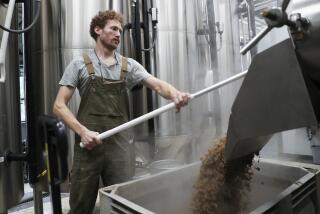The creamy, fuller-flavored case for rye beers
Brewers have long used anything and everything they can as a source of fermentable sugars in their mix of brewing grains -- called the “grist”, but malted barley is by far the favored grain. Barley is full of the enzymes needed to properly convert the starches contained in its kernels to the sugars that the yeast can eat, and it’s fibrous husk eases the brewing process.
Wheat is another very popular ingredient that is important to many styles of beer, but it is better suited to bread-baking than it is to brewing. Its lack of a husk can turn the mash into a thick porridge making it tough to strain.
Rye is another grain more known for its use in bread, but as craft brewers experiment and take inspiration from historical beer styles, rye is becoming more popular as a brewing ingredient. Rye lends a creamy head to a brew, and it can make for a fuller, more rounded mouthfeel. The hearty grain also tends to dry-out beer and can impart a subtle spicy flavor. The influence of rye on a beer’s taste is difficult to describe, but lovers of rye bread will know the distinctive flavor it supplies.
The grain gets used in many craft beer styles, from the traditional roggenbier like those made by TAPS Fish House or LA Aleworks, to pale ales like Ohana Brewing’s Live and Let Rye or County Line Rye from Surf Brewery in Ventura. In recent years, rye has found its way into the grist of many IPAs, and the qualities that rye provides are a great match for the hop-forward flavors of IPAs.
A excellent example of rye’s influence on the flavor and body of an IPA is the imperial rye IPA by Shmaltz Brewing named for comedian Lenny Bruce: Bittersweet Lenny’s R.I.P.A. The 10% ABV - and extremely hoppy - brew is a delicious showcase for the color, mouthfeel, and flavor impact of rye on beer.
More to Read
Eat your way across L.A.
Get our weekly Tasting Notes newsletter for reviews, news and more.
You may occasionally receive promotional content from the Los Angeles Times.








